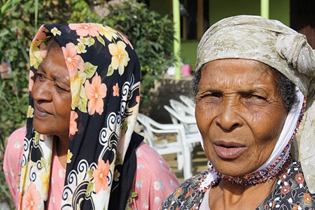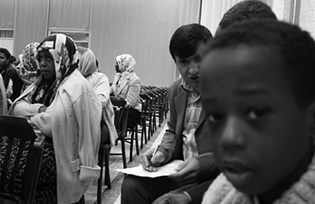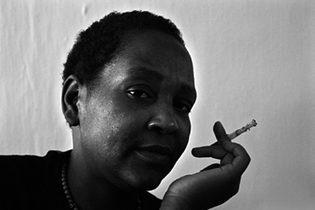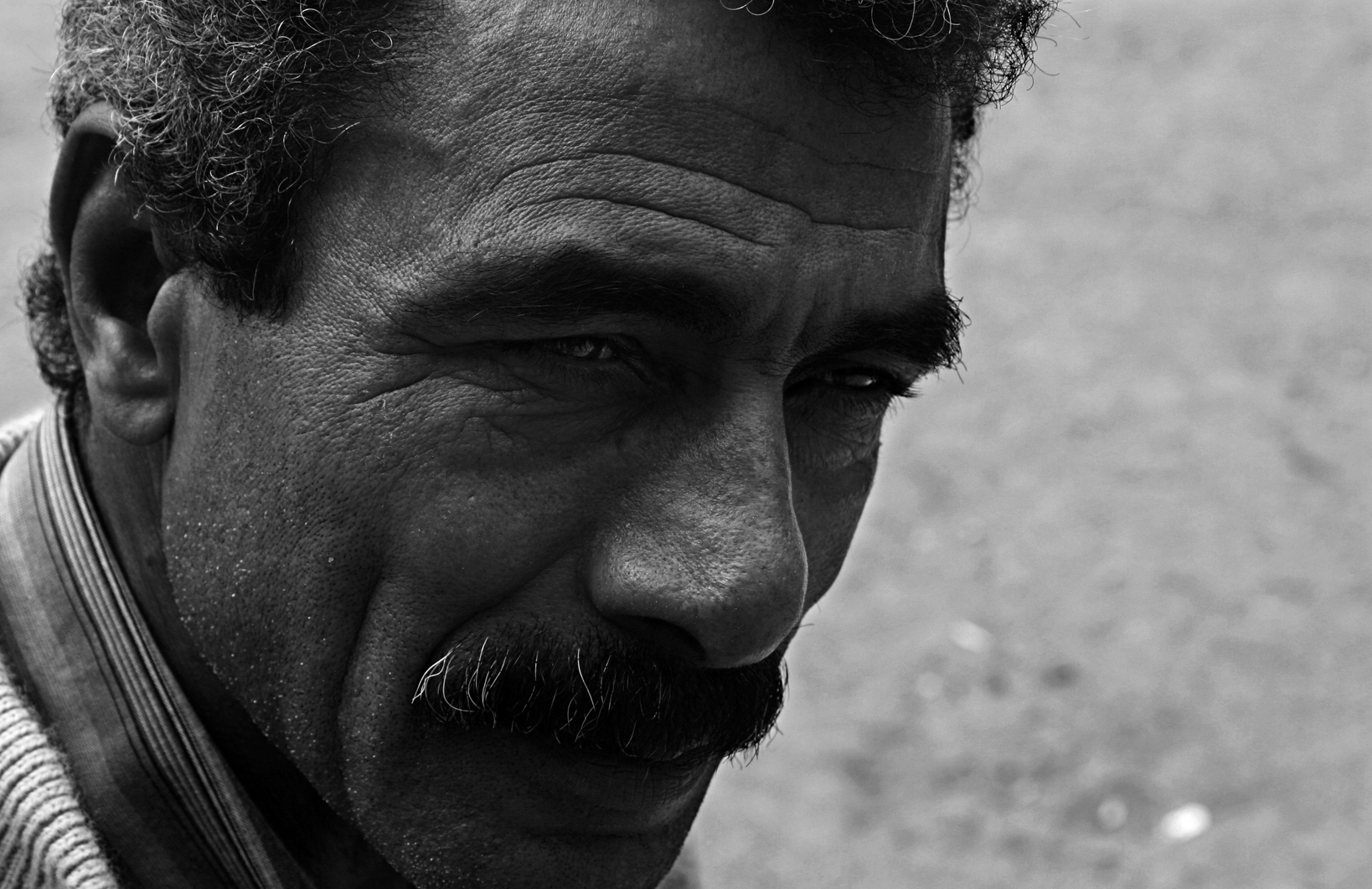BLACK SOCIAL HISTORY Afro-Turks
In the late 19th century the slave trade from Africa towards the Ottoman Empire “boomed”. Most slaves came from Kenya and Sudan and arrived in Western Anatolia. Previously Ottoman slaves had been white from the Balkans and the Caucasus. After abolition, slaves slowly integrated into Turkish society but Afro-Turkish communities exist to this day.
“Galloping from Far Asia and jutting out into the Mediterranean like a mare’s head: this country is ours.” This is the first sentence of the famous poem “The Invitation” by Nazim Hikmet summarizing how the Turks arrived in Anatolia. However, this is only true for a limited number in modern Turkey because many people were already there (Arabs, Kurds, Greeks, Armenians and Assyrians) and others came from other regions (the Balkans, Greece and the Caucasus). Many were brought from the opposite direction against their will. Especially in the late 19th century, the slave trade from Africa towards the Ottoman Empire “boomed”. Most slaves came from Eastern Africa (Kenya and Sudan) and arrived in Western Anatolia. So when you come across fluent Turkish-speaking “Africans” in Ayvalik in the Northern Aegean, in a village around Torbali near Izmir or in a village near the popular tourist destination of Bodrum, they are neither tourists nor refugees, but the descendants of Ottoman slaves.
Slavery existed in different forms in the Ottoman Empire from the 14th until the 19th century. Probably the best known slaves were the Janissaries, the Sultan’s special troops recruited from Christian boys who were taken from their families in the Balkans and the Caucasus and educated at the Sultan’s palace. The most intelligent ones often became high-ranking bureaucrats. Other slaves were the many women of the palace harem – one of whom became the only wife of Suleyman the Magnificent. Known as Roxelana in Europe, she originally came as a slave to the palace from a region in today’s Ukraine . But there were of course also many slaves outside the palace working in households and in agriculture.

Afro-Turkish women from Yeniciftlik Image © Piotr Zalewski
Black slave trade replaced the white slave trade in the late 19th century
Most of the Ottoman Empire slaves were white from the Balkans and the Caucasus. Black slaves until the 19th century were only “traded” in small numbers. This changed in the second half of the 19th century when the Ottomans banned slavery from the Balkans and the Caucasus following pressure from European powers. Between 1860 and 1890 roughly 10,000 African slaves came into the Ottoman Empire each year – in total about 250,000 people. And there was a constant demand for new slaves, because “once a slave always a slave” was not the rule in the Ottoman Empire: many slaves, or at least their children, were set free at some point.
Most of the Ottoman Empire slaves were white from the Balkans and the Caucasus. Black slaves until the 19th century were only “traded” in small numbers. This changed in the second half of the 19th century when the Ottomans banned slavery from the Balkans and the Caucasus following pressure from European powers. Between 1860 and 1890 roughly 10,000 African slaves came into the Ottoman Empire each year – in total about 250,000 people. And there was a constant demand for new slaves, because “once a slave always a slave” was not the rule in the Ottoman Empire: many slaves, or at least their children, were set free at some point.
The final end to slavery came at the turn of the 20th century when slaves were replaced by paid servants. The fate of the freed slaves differed from region to region. In the province of Aydin, near Izmir, the Ottoman bureaucracy had a plan for them. According to official documents 1,500 families were supplied with 1,500 houses, furniture, two cows each and some money. That is the reason why over several decades there were relatively homogenous “African” villages in that region. Around Bayindir, about 75 km southeast of Izmir, 11 “Afro-Turkish” villages were known as the “kitchen of the sultan”, providing agricultural products for the palace in Istanbul. However, since the 1960s when Turkey saw a substantial migration to the cities and from Eastern to Western Turkey, the population in these villages has fundamentally changed. The black inhabitants in the villages around Bayindir are now a small minority, but they have not completely disappeared.

Image © Afro-Turk Association
The majority of Afro-Turks live along the Aegean coast
“Along the Aegean coast, I have met at least 2,000 persons with black skin colour in recent years“, explains Mustafa Olpak during a visit to an Afro-Turkish family in the village of Yeniciftlik (New Farm). At the end of 2006, Olpak founded the first association of “Afro-Turks” in the North Aegean city of Ayvalik. Olpak was born in Ayvalik, but the way his ancestors arrived there, was rather untypical compared with other Afro-Turks. As he writes in his autobiography “Slave Coast”, his great-grandparents were deported from Kenya and sent as slaves to the then still Ottoman island of Crete in the 1890s. In Crete the family became Muslim and worked in the household of a rich Ottoman family. After the Turkish War of Independence, in 1924, Turkey and Greece negotiated a population exchange of Orthodox Christians and Muslims, and Olpak’s family had to leave Crete and was deported to Ayvalik. Olpak grew up there, finished school and married a white Turkish woman, with whom he was together for 25 years until her family said “There should not be any inheritance left to the Arab.” Blacks are often called Arab in Turkish. After this, Olpak filed for divorce. However it was not the only racist comment or discrimination he experienced in his life. Many Afro-Turks have much lighter skin, becauseblack women especially look for white partners to reduce the discrimination for their children that they experienced themselves.
“Along the Aegean coast, I have met at least 2,000 persons with black skin colour in recent years“, explains Mustafa Olpak during a visit to an Afro-Turkish family in the village of Yeniciftlik (New Farm). At the end of 2006, Olpak founded the first association of “Afro-Turks” in the North Aegean city of Ayvalik. Olpak was born in Ayvalik, but the way his ancestors arrived there, was rather untypical compared with other Afro-Turks. As he writes in his autobiography “Slave Coast”, his great-grandparents were deported from Kenya and sent as slaves to the then still Ottoman island of Crete in the 1890s. In Crete the family became Muslim and worked in the household of a rich Ottoman family. After the Turkish War of Independence, in 1924, Turkey and Greece negotiated a population exchange of Orthodox Christians and Muslims, and Olpak’s family had to leave Crete and was deported to Ayvalik. Olpak grew up there, finished school and married a white Turkish woman, with whom he was together for 25 years until her family said “There should not be any inheritance left to the Arab.” Blacks are often called Arab in Turkish. After this, Olpak filed for divorce. However it was not the only racist comment or discrimination he experienced in his life. Many Afro-Turks have much lighter skin, becauseblack women especially look for white partners to reduce the discrimination for their children that they experienced themselves.
Afro-Turk association: traditional Calf-Festival and oral history projects
However, the Afro-Turks also insist that they belong to Anatolia as much as other peoples. They speak the local dialect, wear traditional Turkish clothes and are usually well-integrated into the local Turkish cultural life: “We have been living in this region for at least 150 years and we don’t have any other homeland,” says Olpak.
However, the Afro-Turks also insist that they belong to Anatolia as much as other peoples. They speak the local dialect, wear traditional Turkish clothes and are usually well-integrated into the local Turkish cultural life: “We have been living in this region for at least 150 years and we don’t have any other homeland,” says Olpak.
After his divorce, Olpak moved to Izmir where the main office of his association is located, an association which strives to preserve the heritage of this neglected minority and to heighten general awareness of their situation. As of 2007, the organization has revived the traditional “Calf-Festival”, which had been celebrated by Afro-Turks from the 1880s until the 1920s. Deniz Yükseker of the private Koc University explains the background of the festival: “Leaders of the Afro-Turk community, known as ‘godya,’ used to collect money in order to buy a cow. On the first Saturday of May, they sacrificed this cow. Failing to make this sacrifice would cause droughts, according to popular folklore.” At that time the festivities lasted three weeks, in Republican times this tradition was gradually abandoned until it was revived in 2007. The modern version of the Calf-Festival only lasts for one week-end and so far no animal has been sacrificed, but it is a rare opportunity for the Afro-Turks from different provinces to come together and share ideas. To that end, buses are organized to bring the Afro-Turks to the festival. Mustafa Olpak remembers the bus trip in 2007 from Izmir to Ayvalik: “We had two buses full of black people. Outside of Izmir we were stopped by the police who thought we were illegal refugees. When the police realised that all the travellers were Turkish citizens, we were allowed to continue.”
During its four years of existence, the members of the association have been quick to learn how to deal with the press. When US President Barack Obama visited Turkey in April 2009, the association asked for an official meeting. As Olpak explained: “It was clear to us that we would be very lucky to be given an appointment, but we were able to use his visit to bring attention to our cause.” Olpak has succeded in raising awareness of the Afro-Turkish community through other initiatives too. His book was turned into a documentary by the state-run TRT television channel and well-known publisher Osman Köker organized an exhibition about the Afro-Turks. Through this a wider audience could be reached in the big cities of Turkey.
Besides the organization of the Calf-Festival, which will be celebrated again in May 2011 in Izmir and Bayindir, another focus of the association are oral history projects. And these have even caught the attention of the Turkish Ministry of Culture after the project “Voices of a speechless past” was completed with EU support, for which 100 Afro-Turks were interviewed. Such projects are urgently needed, because so far there is very little material relating to the fate of Ottoman slaves and their descendants.

Image © Afro-Turk Association
… and the third generation researches
The association does also provide practical help, such as support with coal and wood in the winter or school uniforms and shoes for the children. Many Afro-Turks live in poverty, be it in the villages or in the cities they have moved to. There are very few Afro-Turks who have been to university or who hold prestigious positions in politics, sports, culture or private industry. That is why there are few role models for the young generation of Afro-Turks apart from a few notable exceptions like the former Mayor of Dalaman, the singer Esmeray and the football functionary Hadi Türkmen.
The association does also provide practical help, such as support with coal and wood in the winter or school uniforms and shoes for the children. Many Afro-Turks live in poverty, be it in the villages or in the cities they have moved to. There are very few Afro-Turks who have been to university or who hold prestigious positions in politics, sports, culture or private industry. That is why there are few role models for the young generation of Afro-Turks apart from a few notable exceptions like the former Mayor of Dalaman, the singer Esmeray and the football functionary Hadi Türkmen.












































































































No comments:
Post a Comment